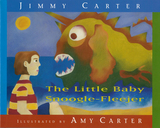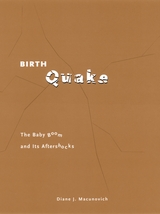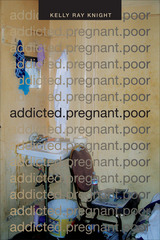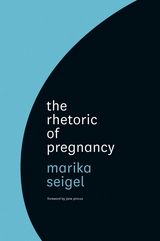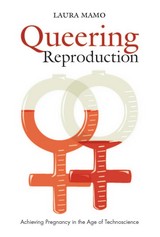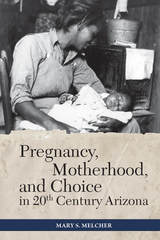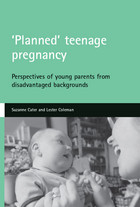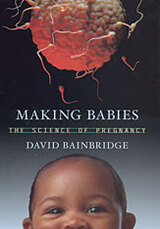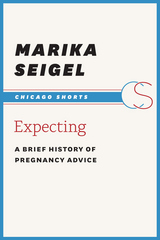Pregnancy & BabiesCollection by Cassandra Verhaegen (9 items)Books fertile with information about pregnancy and its gifts. Includes the following tags:
Age, Bainbridge, David, Biology, Brief History, Carter, Jimmy, Children's Studies, Cocaine abuse, Demography, Drug use, England, Handbooks, manuals, etc, Health & Fitness, Juvenile Fiction, Lesbian mothers, Lesbian Studies, Life Sciences, Mamo, Laura, Monsters, Motherhood, Perspectives, Physiological aspects, Poor women, Population, Pregnancy, Pregnancy & Childbirth, Pregnant women, San Francisco, Seigel, Marika, Self-Esteem & Self-Reliance, Services for, Social Science, Social Themes, Technoscience, Teenage pregnancy
See More
|
The Little Baby Snoogle-Fleejer
by Jimmy Carter
illustrated by Amy Carter University of Arkansas Press, 2014
“Once upon a time there was a little boy named Jeremy who lived with his mother in a small house near the sea. His mother earned a bare living for the two of them by washing clothes for some of the wealthy families in their town. Jeremy loved her very much.” So begins the enchanting fairy tale president Jimmy Carter first spun for his daughter Amy as a child. Originally published in 1995, this favorite family story has been joined with Amy Carter’s vibrant illustrations to bring to life a secret friendship that produces unexpected rewards when tragedy looms in a young boy’s life.
1
|
Birth Quake
by Diane J. Macunovich
University of Chicago Press, 2002
Between 1965 and 1985, the Western world and the United States in particular experienced a staggering amount of social and economic change. In Birth Quake, Diane J. Macunovich argues that the common thread underlying all these changes was the post-World War II baby boom—in particular, the passage of the baby boomers into young adulthood. Macunovich focuses on the pervasive effects of changes in "relative cohort size," the ratio of young to middle-aged adults, as masses of young people tried to achieve the standard of living to which they had become accustomed in their parents' homes despite dramatic reductions in their earning potential relative to that of their parents. Macunovich presents the results of detailed empirical analyses that illustrate how varied and important cohort effects can be on a wide range of economic indicators, social factors, and even on more tumultuous events including the stock market crash of 1929, the "oil shock" of 1973, and the "Asian flu" of the 1990s. Birth Quake demonstrates that no discussion of business or economic trends can afford to ignore the effects of population.
2
|
addicted.pregnant.poor
by Kelly Ray Knight
Duke University Press, 2015
For the addicted, pregnant, and poor women living in daily-rent hotels in San Francisco's Mission district, life is marked by battles against drug cravings, housing debt, and potential violence. In this stunning ethnography Kelly Ray Knight presents these women in all their complex humanity and asks what kinds of futures are possible for them given their seemingly hopeless situation. During her four years of fieldwork Knight documented women’s struggles as they traveled from the street to the clinic, jail, and family court, and back to the hotels. She approaches addicted pregnancy as an everyday phenomenon in these women's lives and describes how they must navigate the tension between pregnancy's demands to stay clean and the pull of addiction and poverty toward drug use and sex work. By creating the space for addicted women's own narratives and examining addicted pregnancy from medical, policy, and social science perspectives, Knight forces us to confront and reconsider the ways we think about addiction, trauma, health, criminality, and responsibility.
3
|
The Rhetoric of Pregnancy
by Marika Seigel
foreword by Jane Pincus University of Chicago Press, 2013
It is a truth widely acknowledged that if you’re pregnant and can afford one, you’re going to pick up a pregnancy manual. From What to Expect When You’re Expecting to Pregnancy for Dummies, these guides act as portable mentors for women who want advice on how to navigate each stage of pregnancy. Yet few women consider the effect of these manuals—how they propel their readers into a particular system of care or whether the manual they choose reflects or contradicts current medical thinking. Using a sophisticated rhetorical analysis, Marika Seigel works to deconstruct pregnancy manuals while also identifying ways to improve communication about pregnancy and healthcare. She traces the manuals’ evolution from early twentieth-century tomes that instructed readers to unquestioningly turn their pregnancy management over to doctors, to those of the women’s health movement that encouraged readers to engage more critically with their care, to modern online sources that sometimes serve commercial interests as much as the mother’s. The first book-length study of its kind, The Rhetoric of Pregnancy is a must-read for both users and designers of our prenatal systems—doctors and doulas, scholars and activists, and anyone interested in encouraging active, effective engagement.
4
|
Queering Reproduction
by Laura Mamo
Duke University Press, 2007
Originally developed to help heterosexual couples, fertility treatments such as in vitro fertilization and sperm donation have provided lesbians with new methods for achieving pregnancy during the past two decades. Queering Reproduction is an important sociological analysis of lesbians’ use of these medical fertility treatments. Drawing on in-depth interviews with lesbians who have been or are seeking to become pregnant, Laura Mamo describes how reproduction has become an intensely medicalized process for lesbians, who are transformed into fertility patients not (or not only) because of their physical conditions but because of their sexual identities. Mamo argues that this medicalization of reproduction has begun to shape queer subjectivities in both productive and troubling ways, destabilizing the assumed link between heterosexuality and parenthood while also reinforcing traditional, heteronormative ideals about motherhood and the imperative to reproduce. Mamo provides an overview of a shift within some lesbian communities from low-tech methods of self-insemination to a reliance on outside medical intervention and fertility treatments. Reflecting on the issues facing lesbians who become parents through assisted reproductive technologies, Mamo explores questions about the legal rights of co-parents, concerns about the genetic risks of choosing an anonymous sperm donor, and the ways decisions to become parents affect sexual and political identities. In doing so, she investigates how lesbians navigate the medical system with its requisite range of fertility treatments, diagnostic categories, and treatment trajectories. Combining moving narratives and insightful analysis, Queering Reproduction reveals how medical technology reconfigures social formations, individual subjectivity, and notions of kinship.
5
|
Pregnancy, Motherhood, and Choice in Twentieth-Century Arizona
by Mary S. Melcher
University of Arizona Press, 2012
Early twentieth-century Arizona was a life-threatening place for new and expectant mothers. Towns were small and very far apart, and the weather and harsh landscape often delayed midwives. It was not uncommon for a woman to give birth without medical care and with the aid of only family members. By the 1920s, Arizona was at the top of the list for the highest number of infant deaths.
6
|
'Planned' teenage pregnancy
by Suzanne Cater and Lester Coleman
Bristol University Press, 2006
This in-depth study explores the motivations for 'planned' teenage pregnancy in England. The findings have important implications for the Teenage Pregnancy Strategy and the increasing political agenda on young people and health.The report is based on 51 in-depth interviews, undertaken among teenagers in six relatively disadvantaged locations who reported their pregnancy as 'planned' (41 women and 10 men). Key findings include:·Young women report varied accounts of the extent to which their pregnancy was planned.Young women's childhood and background act as contributing factors to 'planning' a pregnancy.More explicit and direct influences include viewing pregnancy as a chance to gain a new identity and change direction in life. ·[vbTab]·[vbTab]·[vbTab]·[vbTab]The report includes numerous quotations from young people and documents two contrasting case studies. 'Planned' teenage pregnancy will be of interest to practitioners, policy-makers and researchers in the teenage pregnancy field, including youth workers, Connexions PAs, social workers, and teachers who work with young people before conception, as well as teenage pregnancy co-ordinators, teenage-parent support workers, midwives and health visitors who work closely with young parents or parents-to-be.
7
|
Making Babies
by David Bainbridge
Harvard University Press, 2001
Drawing on past speculation and present knowledge, reproductive biologist David Bainbridge conducts us through the forty weeks of a human pregnancy, from conception to breastfeeding, explaining the complex biology behind human gestation in a clear and unassuming manner.
8
|
Expecting
by Marika Seigel
University of Chicago Press, 2013
As long as there have been pregnancies, there have been suggestions for how best to bring a child into the world: from tips for homeopathic care and natural childbirth to the circulation of old wives’ tales, those who deliver advice to pregnant women are often influenced as much by their own agendas as what is best, or most comfortable, for a new mother. In Expecting, Marika Seigel, author of The Rhetoric of Pregnancy, provides a list of recommended reading and considers the history of pregnancy advice. Opening with her own birthing histories and careful explanation of how she first became interested in the topic, Seigel then casts a skeptical eye over the pregnancy guides that have circulated from the Enlightenment to the present day. Encouraging women to remain empowered when they are pregnant and to collaborate with their health care providers, Seigel articulates how best to have a healthy and affirming birth experience.
9
|
| Click here to go to the beginning. | |||||||||
